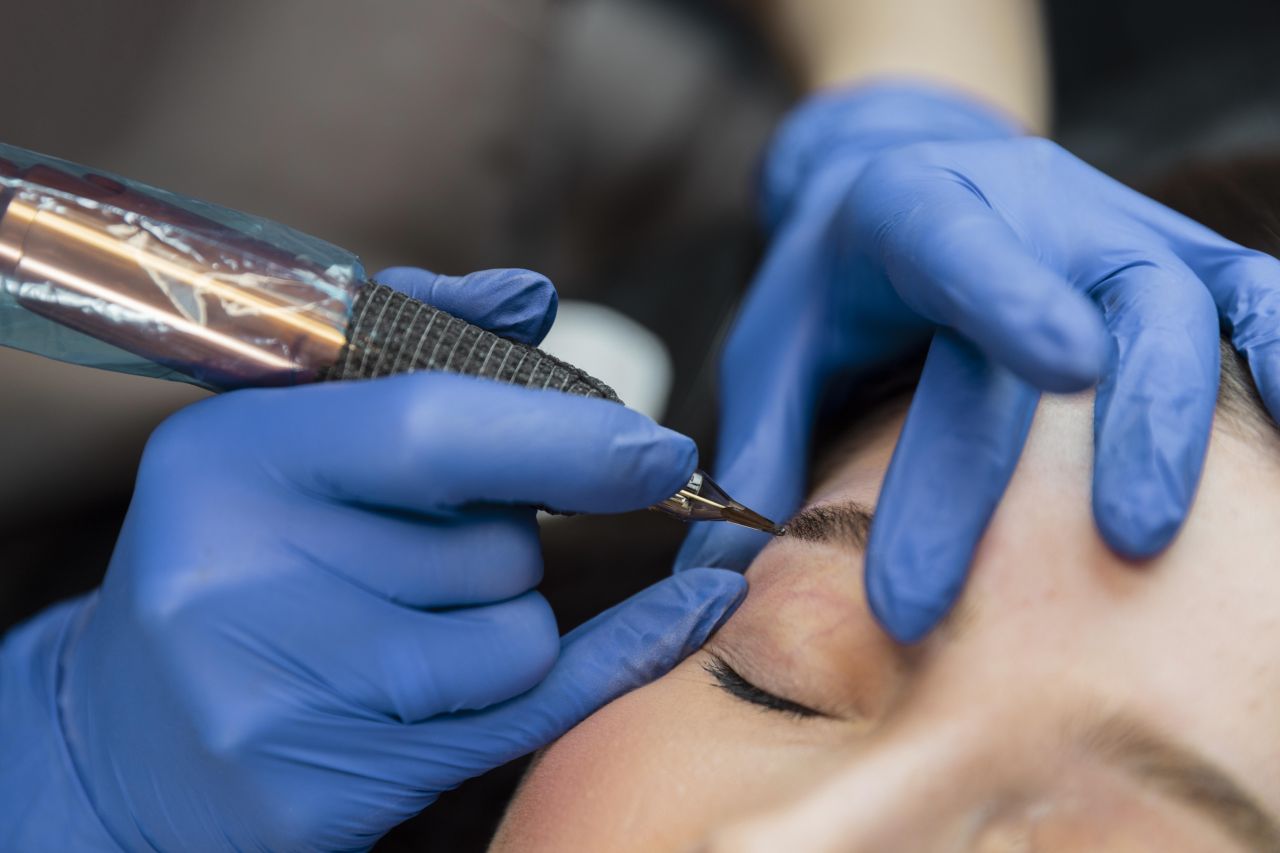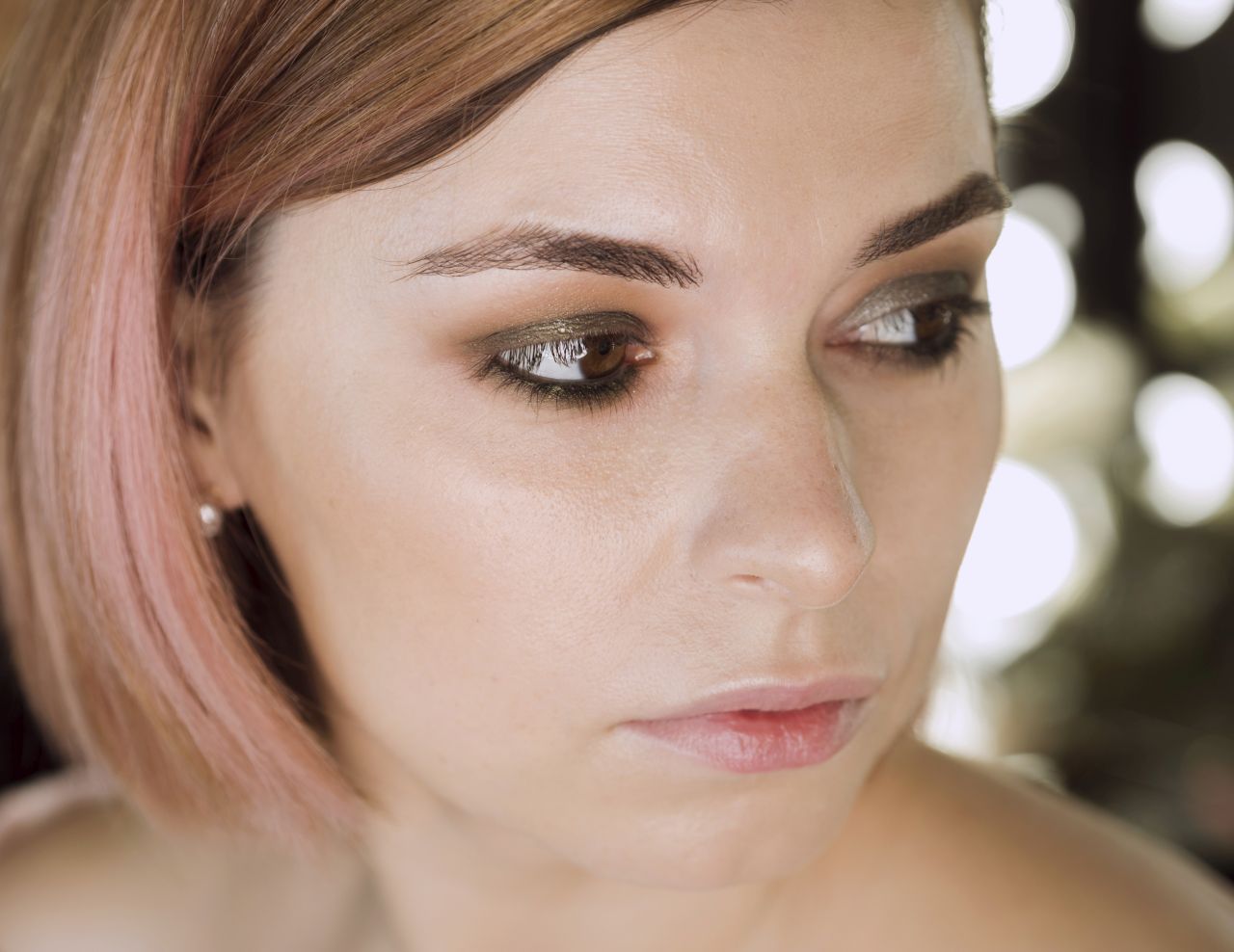Permanent eyeliner tattoos have gained popularity for their promise of hassle-free, long-lasting beauty, eliminating the need for daily eyeliner application. Despite their appeal, these cosmetic procedures come with potential risks and adverse reactions.
Understanding these risks and how to manage them is crucial for anyone considering this beauty enhancement.
This guide is about the common adverse reactions associated with permanent eyeliner tattoos, factors that may increase these risks, and the steps to manage and mitigate any complications that may arise.
Common Adverse Reactions To Permanent Eyeliner Tattoo
Permanent eyeliner tattoos offer the allure of lasting beauty enhancements, promising an end to the daily ritual of eyeliner application. However, like any cosmetic procedure, they come with their own set of potential adverse reactions.
Infection Risk
Permanent eyeliner procedures involving needles that introduce pigment into the skin inherently carry the risk of infection. Symptoms may include redness, swelling, discomfort, and unusual discharge from the treated area. Adhering to strict sterilisation protocols and meticulously following aftercare instructions are critical steps to mitigate this risk.
Allergic Reactions
Some individuals may react adversely to the pigments used in eyeliner tattoos, resulting in redness, itching, and swelling. Conducting a patch test before undergoing the procedure and opting for hypoallergenic pigments can help minimise the likelihood of allergic reactions.
Granulomatous Inflammatory Response
A granulomatous reaction, characterised by firm, raised masses under the pigmented areas, represents a serious adverse effect. Histopathological analysis has shown this inflammatory response without the presence of infectious organisms in some cases. Treatments vary but may include topical and intramuscular steroids and, in severe cases, surgical excision of the tattoo pigment.
Discolouration And Pigment Migration
Over time, the pigment used in eyeliner tattoos can change colour, sometimes turning into unexpected shades like blue or green or migrating beyond the intended area, leading to an uneven or asymmetrical appearance. This risk is heightened by the use of low-quality pigments and the hands of inexperienced technicians. Selecting a skilled practitioner who uses high-quality pigments is essential to avoid such outcomes.
Scarring And Eye Irritation
Though rare, permanent eyeliner tattoos can lead to scarring, especially if needles penetrate too deeply or if aftercare is not properly followed. Eye irritation and discomfort may also occur during the healing process, usually manageable with prescribed ointments and eye drops. Persistent or severe symptoms should prompt consultation with a healthcare professional.
Factors Increasing Risk Of Adverse Reactions To Permanent Eyeliner Tattoos
Permanent eyeliner tattoos are an appealing option for those looking to enhance their beauty regimen with a semi-permanent solution. However, as with any cosmetic procedure, some factors can increase the risk of adverse reactions.
Choice Of Technician And Establishment
The skill and experience of the tattoo artist play a crucial role in minimising the risk of complications. Opting for an artist who is not only adept at eyeliner tattooing but also understands the delicate nature of the eyelid area is essential. The establishment’s cleanliness and adherence to health standards significantly impact the likelihood of infection.
Pre-Procedure Precautions
Failure to follow pre-procedure precautions can elevate the risk of adverse reactions. These include avoiding alcohol, caffeine, and certain dietary supplements, and not engaging in activities such as chemical peels or using lash serums close to the procedure date. These measures help ensure the skin is in the best possible condition for the tattooing process.
Skin Sensitivity And Health Conditions
Individuals with sensitive skin or specific health conditions may experience heightened reactions to the tattoo pigment or the process itself. Consulting with a dermatologist before an eyeliner tattoo can help identify potential concerns that could lead to adverse reactions.
Aftercare And Healing Process
Proper aftercare is pivotal in preventing infections and ensuring optimal healing. Failure to follow aftercare instructions, such as keeping the area clean and avoiding direct sun exposure, can significantly increase the risk of complications. Additionally, the skin’s healing capacity and response to the tattoo pigment can vary, impacting the overall outcome and potential for adverse reactions.
Type Of Pigment Used
The composition of the pigment used in the tattoo can also influence the risk of reactions. Some individuals may have allergic reactions to certain pigments, making it vital to discuss pigment choices with the technician. Undergoing a patch test before the procedure can help mitigate this risk.
Technique Employed
The technique used by the tattoo artist, including the depth of pigment deposition and the equipment utilised, can affect the likelihood of blowouts, smudging, or uneven pigment distribution. A delicate approach and precision are required to minimise damage to the thin eyelid skin.
Individual Lifestyle And Skincare Routine
Lifestyle factors such as sun exposure and using certain skincare products can affect the tattoo’s longevity and potentially increase the risk of fading or discolouration. Moreover, natural exfoliation and skincare routines that involve rubbing or touching the eyes can impact healing and pigment retention.
Managing Adverse Reactions To Eyelid Tattooing
A growing number of people are opting for cosmetic procedures like permanent eyeliner or eyelid tattooing as an alternative to applying makeup every day. While it offers the allure of waking up with perfect eyeliner every day, the process is not without potential risks and adverse reactions.
Immediate Post-Procedure Care
Proper aftercare following eyelid tattooing is crucial for minimising the risk of adverse reactions. The tattooed area must be kept clean and dry, avoiding direct water exposure, sweat, and makeup for the first few days. Applying a thin layer of the recommended aftercare ointment can aid in the healing process while preventing infections.
Identifying Signs Of Infection
Infections are a primary concern with any form of tattooing, including eyelid tattoos. Signs of infection may include redness, swelling, pain, or unusual discharge around the tattooed area. If you notice any of these symptoms, it’s important to seek medical attention promptly to prevent the spread of infection and more severe complications.
Dealing With Allergic Reactions
Allergic reactions to the pigment used in eyelid tattooing can occur. Symptoms such as itching, redness, or swelling should be monitored closely. If an allergic reaction is suspected, contact a healthcare professional for advice. They may recommend over-the-counter antihistamines or prescribe medication to alleviate the symptoms.
Managing Swelling And Discomfort
Swelling is a common side effect immediately following the procedure. Gently applying a cold compress or a clean, damp cloth over the eyes can help reduce swelling. Avoid using ice directly on the skin, as extreme cold can damage the delicate eyelid area. For discomfort, taking over-the-counter pain relief medication, as advised by a healthcare professional, can provide relief.
Avoiding Complications With Ink Migration
Ink migration, where the pigment spreads outside the intended area, can lead to smudging or blurring of the eyeliner. This issue underscores the importance of selecting a skilled and experienced tattoo artist. Should ink migration occur, consulting with the original artist or a medical professional specialising in laser removal may be necessary to correct the issue.
Touch-Ups And Long-Term Care
Eyeliner tattoos may fade over time and require touch-ups. However, if you experience adverse reactions, it’s important to address these issues before considering additional sessions. Continuous exposure to sunlight can also fade the pigment faster. Wearing sunglasses and applying SPF around the eyes (once healed) can help protect the tattoo from UV rays.
Laser Removal For Severe Cases
In cases where adverse reactions persist, or the tattoo’s result is unsatisfactory, laser tattoo removal may be considered a last resort. This process can be complex, particularly around the sensitive eye area, and requires consultation with a specialist experienced in removing cosmetic tattoos.
Conclusion
While permanent eyeliner tattoos offer a convenient and aesthetically pleasing solution to daily makeup routines, they are not without potential risks and adverse reactions.
It is essential to thoroughly research and select a skilled technician, follow pre-procedure and aftercare guidelines, and be aware of the signs of possible complications. By taking these precautions, individuals can enjoy the benefits of permanent eyeliner tattoos while minimising the likelihood of adverse reactions.
If complications do arise, seeking prompt medical advice and appropriate treatment can help manage and mitigate these issues effectively.
Frequently Asked Questions
What Are Some Common Adverse Reactions To Permanent Eyeliner Tattoos?
Common adverse reactions can range from mild to severe and include swelling, redness, and itching around the tattooed area. In some cases, individuals may experience allergic reactions to the pigment used, leading to symptoms like excessive swelling, rash, or blistering. Infection and granulomas (small areas of inflammation) can also occur if the procedure is not performed under sterile conditions or if aftercare instructions are not properly followed.
How Soon After The Procedure Do Adverse Reactions Typically Occur?
Some reactions, such as swelling and redness, can occur immediately and are generally part of the normal healing process. These typically subside within a few days. Allergic reactions or infections may take longer to manifest, appearing several days to weeks after the procedure. It’s crucial to monitor the tattooed area closely during the healing period and consult a professional if any concerning symptoms develop.
Can An Allergic Reaction To Permanent Eyeliner Be Treated?
Yes, allergic reactions can be treated. Mild allergic reactions might be managed with over-the-counter antihistamines or topical corticosteroids to reduce itching and swelling. However, more severe reactions require prompt medical attention. In rare cases, laser treatment may be needed to remove the pigment. Always consult a healthcare provider or dermatologist for advice on managing an allergic reaction to tattoo pigment.
Is There A Way To Test For An Allergic Reaction Before Getting A Permanent Eyeliner Tattoo?
Some practitioners offer patch tests, where a small amount of pigment is tattooed into the skin in an inconspicuous area to observe for any adverse reactions over a specific period, typically a few days to a week. While patch tests can help identify potential allergies to specific pigments, they may not eliminate the risk of reaction.
What Should I Do If I Experience An Adverse Reaction To My Permanent Eyeliner Tattoo?
If you suspect an adverse reaction, it’s important to seek professional medical advice as soon as possible. Contacting the practitioner who performed the procedure to inform them of your symptoms can also be helpful. Depending on the severity and nature of the reaction, treatment may involve medication, such as antibiotics for an infection or antihistamines for an allergic reaction. In some cases, more intensive treatments, like corticosteroid injections or laser removal, may be recommended.


